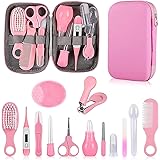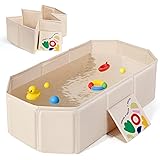Building strong hygiene habits for kids is crucial for their health and well-being. Good personal hygiene prevents the spread of germs. It also helps children feel confident and fresh. This article expands on the essential practices seen in the video above. We will dive deeper into handwashing, personal care, and dental health. Learning these routines early sets children up for a healthier life.
Mastering Handwashing for Healthy Kids
Clean hands are a first line of defense against illness. The video showed proper handwashing steps. It also highlighted the importance of frequent washing. Teaching children these methods reduces sickness.
Why Handwashing Matters
Germs like viruses and bacteria spread easily. They can live on surfaces and hands. Washing hands properly removes these microorganisms. This simple act can prevent colds, flu, and other infections. Studies from the CDC show handwashing reduces respiratory illnesses by 16-21%. It also cuts diarrheal disease risk by up to 58% in young children.
The 10-Step Handwashing Method
The video demonstrates a detailed 10-step process. This thorough method ensures all parts of the hands get clean. Follow these steps for at least 30 seconds. This duration is key to eliminating harmful germs effectively.
- Wet hands and apply soap.
- Rub palms together vigorously.
- Rub the back of hands with palms, alternating.
- Interlock fingers and rub between them.
- Cup fingers, rubbing cupped palm with the opposite hand.
- Enclose left hand with right thumb, rub well, then swap.
- Rub fingertips over the opposite palm to clean under nails.
- Rub around wrists with the opposite hand, then swap.
- Rinse soap off thoroughly under running water.
- Dry hands with a clean, dry towel.
Encourage children to sing a short song while washing. This helps them reach the 30-second mark. Make it a fun and consistent routine. This is vital for developing good hygiene habits for kids.
When to Wash Hands
Regular handwashing is important throughout the day. The video highlighted several key times. Parents should reinforce these moments. Consistent practice builds strong habits.
- Upon arriving home from school or play.
- Before and after every meal.
- Before and after preparing any food.
- After using the bathroom.
- After touching pets or other animals.
- After coughing, sneezing, or blowing the nose.
These times are when germ transmission is highest. Making handwashing a habit during these moments protects everyone. It is a cornerstone of good hygiene habits for kids.
Comprehensive Personal Hygiene Practices
Beyond handwashing, daily personal care keeps children healthy. It also builds self-esteem. The video touched on showering, nail care, and face washing. Let’s explore these more deeply.
Daily Showers and Bathing
Showering or bathing daily is a fundamental habit. It removes dirt, sweat, and oils from the skin and hair. The video emphasizes showering, especially after physical activity. This prevents skin irritation and body odor.
Sweat and bacteria combine to create odor. A daily shower washes these away. Teach children to use a small amount of shampoo and body wash. Guide them to clean all body parts. Turning off the tap while lathering saves water. This teaches environmental responsibility alongside hygiene.
After showering, always use a clean, dry towel. Damp towels can harbor bacteria. Wearing clean clothes after a shower completes the routine. This prevents transferring dirt back onto a fresh body.
Nail Care and Grooming
Short, clean fingernails are important for hygiene. Dirt and germs can collect under long nails. Biting nails can transfer these germs into the mouth. This can lead to sickness.
Regularly trim children’s nails. Use child-safe scissors or nail clippers. Make it a weekly activity. Emphasize the importance of keeping nails clean. This prevents the buildup of harmful bacteria. Good nail care contributes to overall health. It also looks neat and tidy.
Face Washing Routine
Washing the face removes dirt, oil, and sweat. It prevents clogged pores and skin issues. The video recommends washing the face twice daily. This includes morning and night.
Washing the face upon waking removes overnight oils. It also refreshes the skin. Washing before bed removes accumulated dirt from the day. It prepares the skin for rest. Use a gentle cleanser and warm water. Pat the face dry with a clean towel. This simple step can prevent minor skin problems. It adds to a child’s feeling of cleanliness.
Excellent Oral Hygiene for Strong Teeth
Brushing teeth and overall oral care are vital. They prevent cavities and gum disease. The video highlights a proper tooth brushing routine. It also suggests additional oral care tips.
The 2-Minute Brushing Rule
Brushing for at least 2 minutes is crucial. This ensures enough time to clean all tooth surfaces. Many electric toothbrushes have timers. Manual brushing can use a timer or a song. This helps children develop patience and thoroughness.
Using a pea-sized amount of fluoride toothpaste is sufficient. Fluoride strengthens tooth enamel. It helps protect against cavities. Encourage children to spit out excess toothpaste. Rinsing afterwards removes loose debris.
Steps for Effective Tooth Brushing
Proper technique is as important as duration. The video details a six-step process. Following these steps cleans teeth thoroughly.
- Apply a pea-sized amount of toothpaste.
- Brush back teeth and molars first. Hold the brush at a 45-degree angle. Use gentle, short strokes or small circular motions. Brush outer surfaces of upper and lower teeth.
- Brush the inside surfaces of upper and lower teeth. Remember to reach back molars.
- Clean chewing surfaces with back and forth motions.
- Gently brush the inside of cheeks and the tongue. This removes bacteria and freshens breath.
- Spit out excess toothpaste and rinse.
Supervise young children while brushing. Ensure they reach all tooth surfaces. Make brushing a routine after every meal. This prevents food particles from sitting on teeth.
Beyond Brushing: Complete Oral Care
Brushing is a cornerstone. However, a complete routine includes more. Incorporate these habits for optimal dental health. The video briefly mentioned these important additions.
Dental Floss
Flossing removes food and plaque from between teeth. It reaches where toothbrushes cannot. Teach children to floss gently. Daily flossing prevents cavities and gum disease. The American Dental Association recommends flossing once a day.
Fluoride Mouth Rinse
A fluoride mouth rinse offers extra protection. It strengthens enamel and kills bacteria. Use an age-appropriate rinse. Consult a dentist before introducing mouth rinse to young children. This adds another layer of defense against decay.
Balanced Diet
Eating a balanced diet supports dental health. Limit sugary snacks and drinks. Sugars feed bacteria in the mouth. These bacteria produce acids that erode enamel. Fresh fruits, vegetables, and dairy strengthen teeth. Proper nutrition is key for strong, healthy teeth.
Switch Your Toothbrush
Replace toothbrushes every 3-4 months. Replace them sooner if bristles are frayed. Frayed bristles are less effective. They can also scratch gums. A new toothbrush cleans more efficiently. It removes more plaque and food debris.
Cough and Sneeze Etiquette
Controlling the spread of germs is crucial. This includes proper cough and sneeze etiquette. The video shared a simple, effective tip. Teach children to sneeze or cough into their elbow.
Covering the mouth with hands spreads germs. Those germs then transfer to surfaces. They can also pass to others. Sneezing into an elbow contains droplets. This significantly reduces germ transmission. It is a small but mighty act of prevention. This simple act contributes greatly to community health. Practicing this is an important part of hygiene habits for kids.











